For the past few months, the Rabbit has been experimenting with dyeing fiber, and trying to learn about what fiber dyed in particular ways looks like when it is spun into yarn. There has been a lot of brightly-colored paw fur and some interesting results.
For example, this is some of the first fiber I dyed, with food coloring from the local Metro. It's hard to get much depth of shade with food coloring, so the fiber ended up looking like Easter eggs. Which, if you're a rabbit, isn't such a bad thing, as Easter is the national holiday of bunnies. Anyway, here's some fiber from that experiment, some Cormo top from Apple Rose Farms:
See what I mean about Easter eggs? So here's what that top looks like as yarn:
I found it hard to draft the Cormo smoothly, so I went for a thick and thin yarn. This was before I read Judith McKenzie McCuin on thick and thin yarn, so the bumps aren't exactly mathematically precise. But I still think this would make a nice baby hat.
For my second experiment, I used acid dyes (Sabraset, to be exact, from Pro Chemicals) on some lovely Polwarth top from Legacy Studio:
At the time, I was deep into Lynne Vogel's Twisted Sisters Sock Workbook. I highly recommend this book to anyone interested in dyeing fiber. Vogel keeps the math involved in mixing dye solutions very simple, and advocates just mixing colors intuitively and playing, which gave me the courage to dive in.
I used the same four colors, a persian blue, an olive, an eggplant and a plum using different dyeing methods on different sections of fiber. I was thus able to get a range of different values that I then combined in different ways (still following Lynne Vogel's advice). Here was the result:
The braid in the back was painted in solid stripes; for the ones in the front, I scattered the dye onto the fiber in artful, Pollock-esque drips (the difference between the front and middle braids was only in how much dye I used).
I then made a series of two-ply yarns using these braids in as many different combinations as I could.
Then I became interested in what happens when one uses one solid ply and two painted plies together in the same yarn. I started with this Finn top, from Village Spinning and Weaving, dyed with Sabraset dyes:
Then I dyed up some border leicester locks in coordinating blues:
and
Spun and plied together, these yarns look like this:
Finally, and this will catch you all up on the dyeing experiments thus far, yesterday I dyed three 3 oz. bumps of Wensleydale (from the fabulous Beth Smith's Spinning Loft) in tones of red, green and brown, with one light bump, one medium, and one dark. I used the same base color for the browns, adding black for the darkest bump and water for the lightest. I aimed for a forest, olive and sage green, and for a maroon, medium red and a pink for the other two. Things turned out unexpectedly:
Not exactly what I was going for, but I'm going to try plying them together and see what happens.
Subscribe to:
Post Comments (Atom)

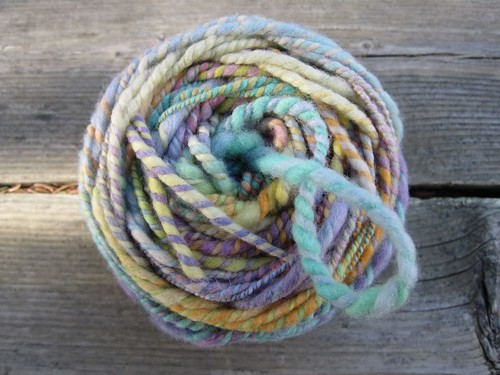
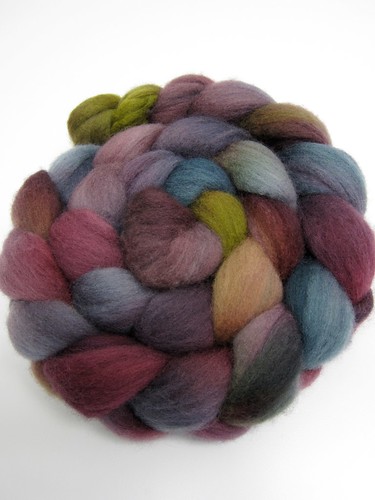
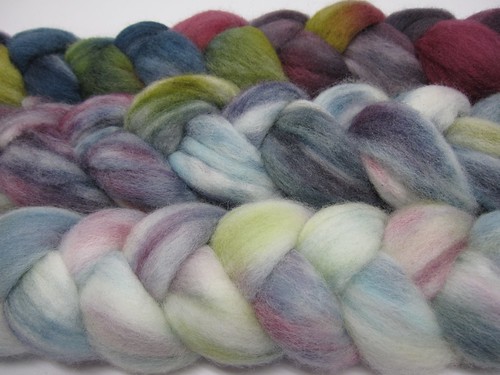
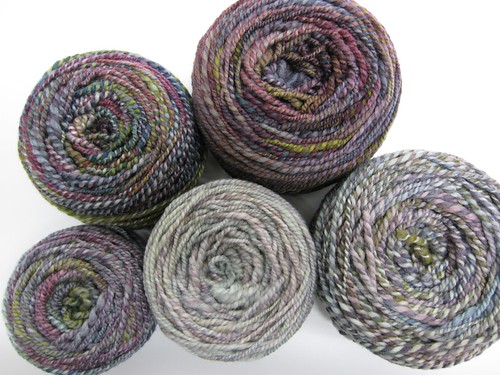

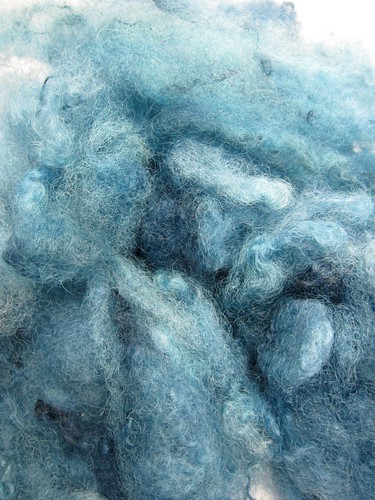
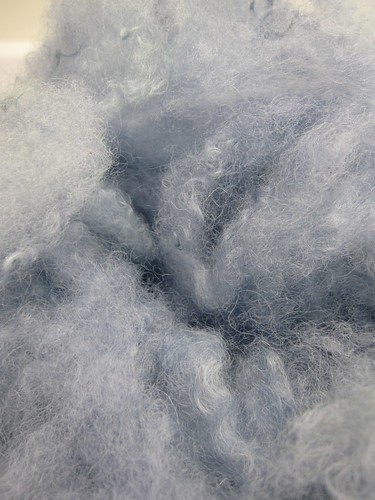
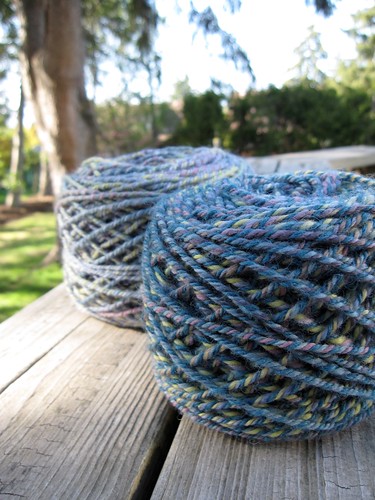





No comments:
Post a Comment